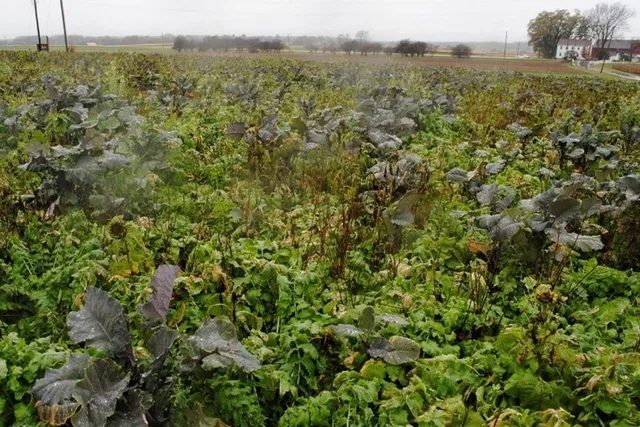By: Sjoerd Willem Duiker
Small grains are mostly harvested across Pennsylvania and corn silage harvest will begin soon. Other crops such as snap beans and other vegetables may have been harvested as well. An important component of sustainable soil management is to keep soil covered at all times with living vegetation. That means planting cover crops as soon as possible after main crop harvest. Cover crops provide diversity in the landscape, protect soil from erosion, reduce runoff, increase infiltration, recycle nutrients from the subsoil, fix atmospheric nitrogen, and improve soil organic matter content as well as provide emergency forage. At this time many different species can still be planted. We encourage you to check out the Northeast Cover Crops Council Species Selector Tool that can help you determine the best species for your specific location based on plant hardiness zone, soil type, crop rotation, and goals. The tool also provides information on growth traits, planting and termination information, cost, and additional helpful comments. Below are a couple of species options for fall establishment from the Penn State Agronomy Guide. When creating a mixture of different species, it is recommended to combine species that complement each other. We do not include warm-season annuals because it is already getting late to expect much growth out of them.
Table 1. Recommended latest fall seeding dates for cool-season annual cover crops by small grain management areas in Pennsylvania.
| Species | Area 1 | Area 2 | Area 3 |
|---|---|---|---|
| Winter rye | October 10 | October 15 | October 25 |
| Winter wheat | October 1 | October 5 | October 15 |
| Winter barley | n/a | September 25 | October 1 |
| Spring oats | September 1 | September 10 | September 15 |
| Annual ryegrass | August 15 | September 1 | September 15 |
| Crimson clover | n/a | September 1 | September 15 |
| Austrian winter pea | n/a | August 25 | August 30 |
| Hairy vetch | August 15 | September 1 | September 15 |
| Forage radish | September 1 | September 7 | September 15 |
| Rapeseed/canola | September 1 | September 7 | September 15 |
| Turnip | September 1 | September 7 | September 15 |
Source: Penn State Agronomy Guide
Small grain management areas in Pennsylvania (Figure 1.7-1 of The Penn State Agronomy Guide)
Source: Penn State Agronomy Guide
Make sure to consider potential herbicide residual issues, pest life cycles, termination strategies and timing, and cost when choosing a cover crop species or mixture.
Taking advantage of cover crops can add diversity to your crop rotation, help hold or fix nitrogen for your next crop, suppress weeds, protect soil, provide pollinators or livestock food, and more. If you would like assistance navigating the Selection Tool or would like to talk through your cover cropping plan, reach out to your local Agronomy Educator, NRCS Conservationist, or Conservation District Ag Specialist.






Post a comment
Report Abusive Comment